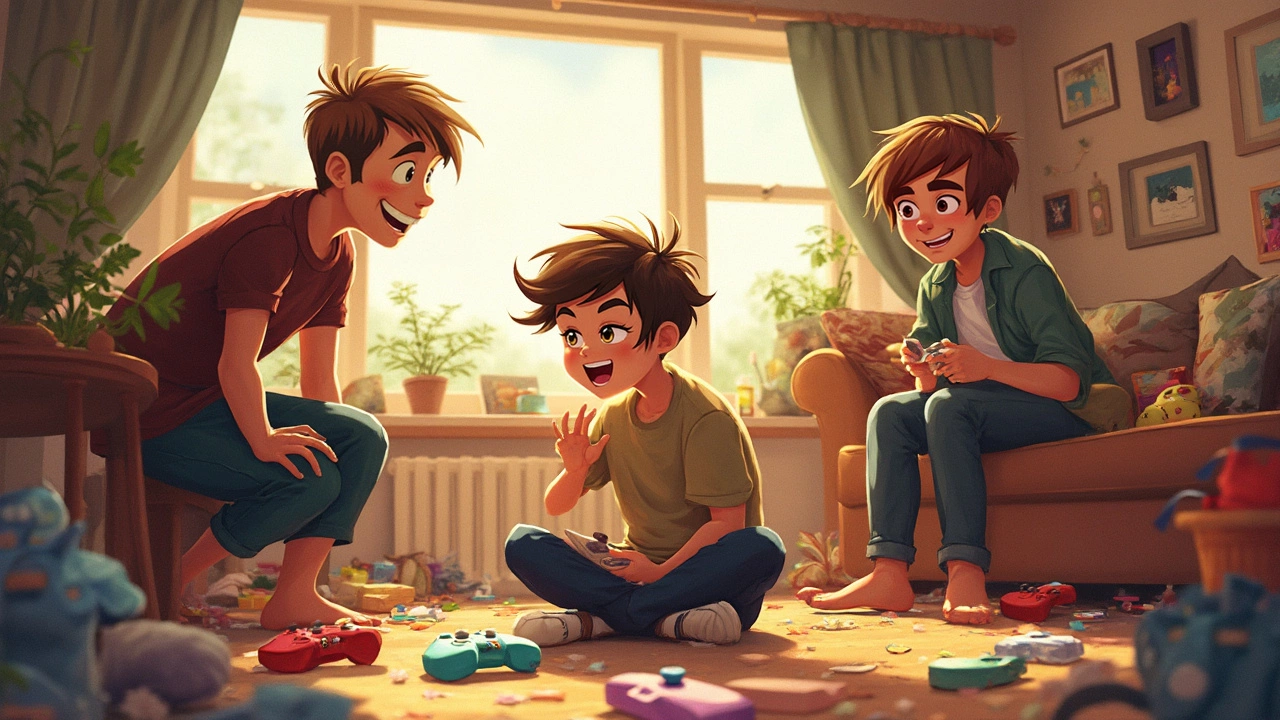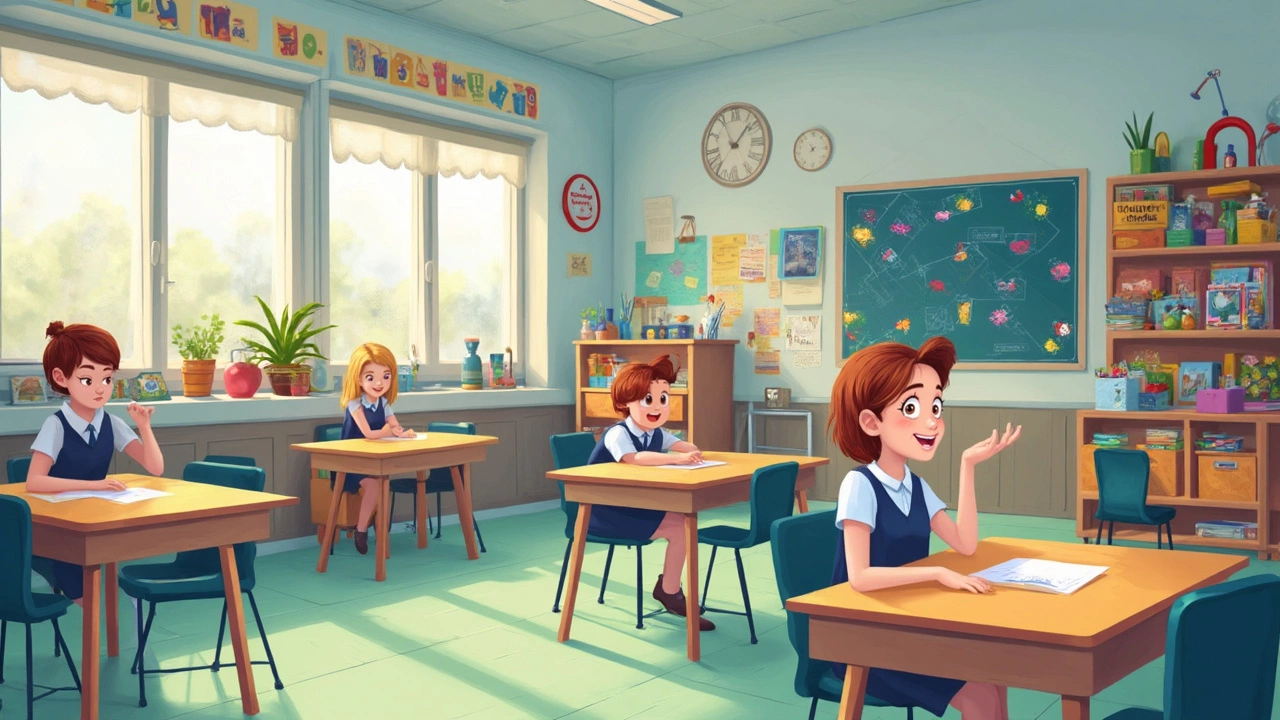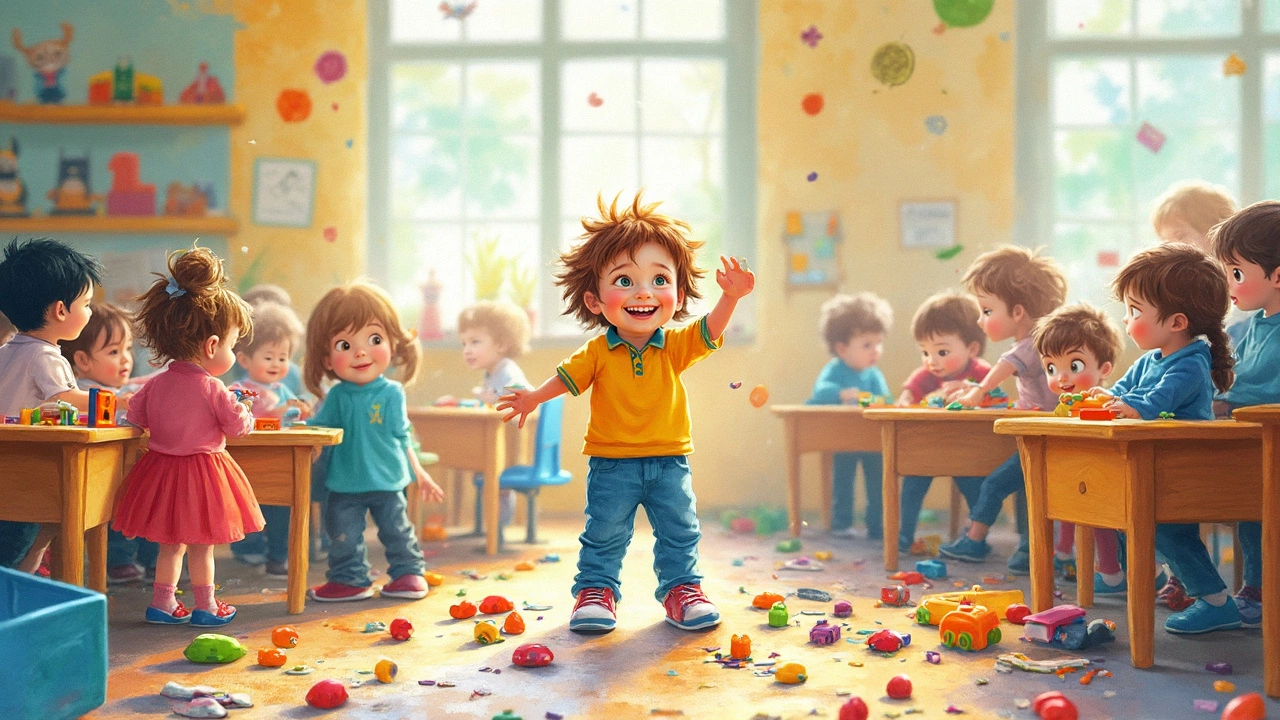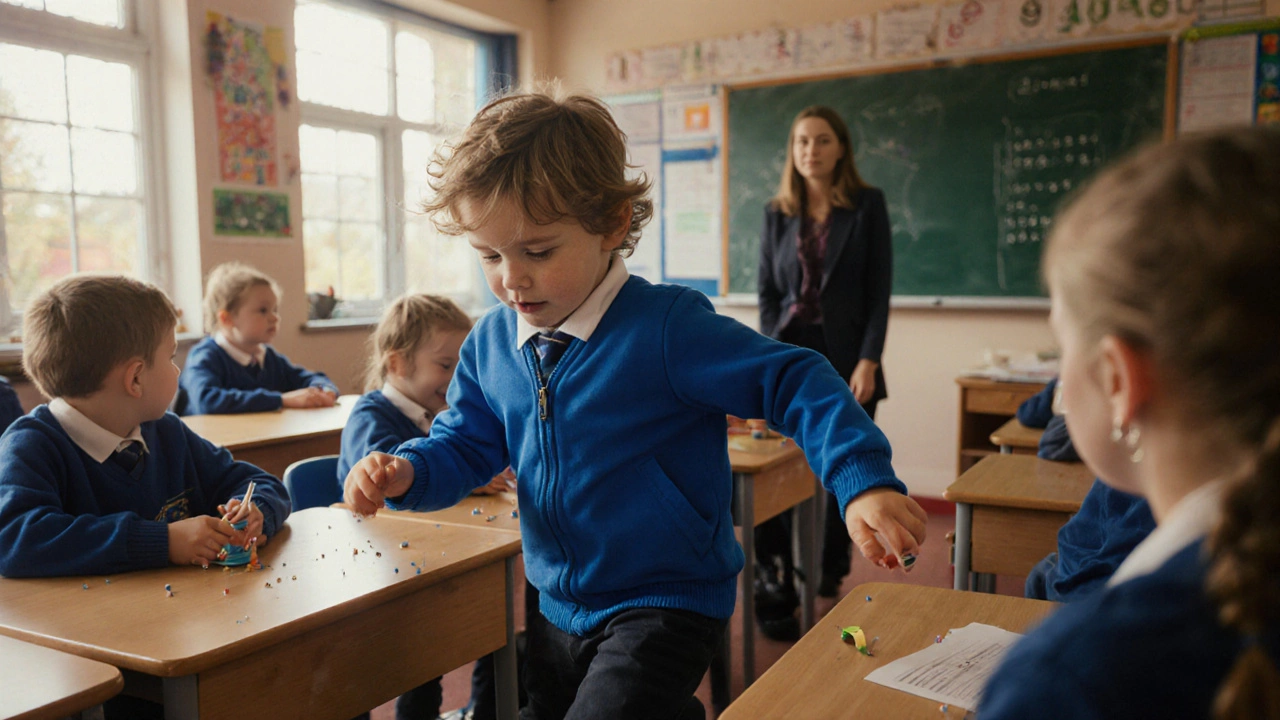What Makes ADHD Worse? Triggers You Might Overlook

If you’ve ever tried to help a child with ADHD concentrate, you know it can feel like an uphill battle—especially on the days where nothing seems to work. So, what actually makes ADHD worse? Sometimes, it's not what you think. Tiny triggers lurking in plain sight—like clutter, noisy toys, or even the wrong kind of 'educational' game—can turn a decent day into complete chaos.
Let’s get real. The wrong toy at the wrong moment can send focus out the window. Some toys are just too loud, flashy, or complicated. Instead of helping a child slow down, they can add fuel to the distraction fire. But here's the tricky part: what works for one child might totally overwhelm another. It's not just about the label 'educational toy.' It's about paying attention to how the child reacts—not how the packaging promises they'll react.
- Hidden Triggers in Everyday Life
- How Toys Can Help or Hurt
- The Problem with Overstimulation
- Routine Ruts and Flexibility
- Screen Time: Friend or Foe?
- Simple Swaps That Help
Hidden Triggers in Everyday Life
It’s easy to blame school, siblings, or even sugar for a child’s rough ADHD day, but a lot of the time, triggers hide right at home. Let’s be specific: basic things like clutter, background noise, or even surprise changes can all crank up symptoms way more than most people realize.
Ever notice how a messy play area seems to make a child with ADHD even more scattered? It’s not just a hunch. Spaces packed with random stuff give the brain too much to process. In fact, studies from ADHD research groups show that kids do better when their environment is simple and organized. Less stuff means less distraction, plain and simple.
Noises are sneaky, too. It isn’t only blaring music—fans, TVs left on, constant phone beeps, or even busy street sounds can get under the skin. Kids might appear to tune out, but their brains are working overtime to filter everything out. Sometimes, by dinner, they’re running on empty and their focus is long gone.
Another hidden culprit? Sudden changes to routine. ADHD brains love knowing what’s next. When the schedule shifts without warning, anxiety and frustration kick in, which can instantly crank up fidgeting, talking, or zoning out.
- Keep play and study areas tidy
- Turn off background electronics when focus is needed
- Give reminders before transitions or changes
Here’s a quick rundown from a survey published by the Journal of Attention Disorders (2024) that looked at the top household triggers for ADHD kids. The numbers show what parents noticed as the biggest problems:
| Hidden Trigger | Parents Noticing Impact (%) |
|---|---|
| Cluttered rooms | 82% |
| Background noise (TV/radio) | 79% |
| Unexpected changes in plans | 76% |
| Lack of sleep | 73% |
So, when thinking about what makes ADHD worse, look at the environment first. Small changes—like cleaning up, keeping noise down, and warning before changing plans—can really dial down the chaos.
How Toys Can Help or Hurt
Educational toys are everywhere, but not all of them play nice with ADHD. Flashy, noisy toys might claim to boost learning, but for kids with ADHD, these can crank up distractions instead of focus. Research from the American Academy of Pediatrics found that simple toys—think building blocks, puzzles, and art supplies—end up helping kids manage attention better than electronic or multitasking gadgets.
Let’s break down what works and what doesn’t:
- ADHD-friendly toys are usually basic. They invite kids to use their imagination instead of just pushing buttons.
- Toys with too many lights, sounds, or steps can overwhelm and lead to more impulsive behavior.
- Fidget tools, when used right, actually help some kids focus, but they can also distract others. It really depends on the child.
- Board games with clear, simple rules are often better choices than complicated ones that drag on forever.
Here’s a quick comparison to show how toy types stack up for kids with ADHD:
| Toy Type | Help Focus | Risk of Overwhelm |
|---|---|---|
| Building Blocks | High | Low |
| Electronic Gadgets | Low | High |
| Puzzles | High | Low |
| Fidget Spinners | Medium | Medium |
| Noisy Light-Up Toys | Low | High |
One tip: Watch how your child plays with new toys for the first week. If you spot more fidgeting, frustration, or meltdowns, that toy might be doing more harm than good. And just because a toy says “educational” on the box doesn’t mean it’s good for every kid. Trust what you see, not just the marketing.
The Problem with Overstimulation
Kids with ADHD are super sensitive to everything happening around them. Too much noise, too many colors, too many bright lights—these things can send their brains into overdrive. It’s like trying to have a quiet conversation in a room where five TVs are on at full blast. Overstimulation makes it nearly impossible to focus, listen, or finish a simple task.
Sound crazy but it’s true: studies have shown that environments filled with extra noise, activity, or clutter actually make ADHD symptoms worse. When the brain is getting hit with too much at once, it can’t filter out what’s important. Instead, attention jumps from one thing to the next without ever landing anywhere helpful. That’s when the fidgeting, meltdowns, or total shutdowns start.
Here are some everyday things that crank up overstimulation at home or in the classroom:
- Toys that flash, beep, or play constant music.
- Rooms with walls covered in posters, magnets, or colorful art.
- Too many activities going on at once (TV, tablet, and homework, anyone?).
- Loud background noises like traffic, people talking, or even my cat Muffin knocking stuff over (I know this one too well).
It’s more common than you’d think. A survey by the CDC found that 6 in 10 children with ADHD struggle with sensory overload in loud or busy environments. Here’s a quick look at what tends to tip kids into overstimulation:
| Trigger | Common Result |
|---|---|
| Bright, noisy toys | Restlessness, trouble concentrating |
| Messy play areas | Forgetfulness, irritability |
| Too many simultaneous tasks | Meltdowns or refusing to participate |
| Excessive screen time | Emotional outbursts, insomnia |
If you want to help, keep it simple. Fewer distractions mean fewer problems. Stick to one or two toys at a time, go for soothing colors, and try noise-canceling headphones if it gets loud. Sometimes, just tidying up makes a world of difference.

Routine Ruts and Flexibility
Routines are a lifesaver for kids with ADHD, but here’s the catch: if the routine gets too rigid, it can totally backfire. Kids end up running on autopilot, and the minute something changes—like a guest visiting or a schedule shift—suddenly, everything falls apart. You’ll notice more meltdowns, frustration, and a lot less focus. The problem isn’t just about having a routine; it’s about keeping it flexible enough so everyday surprises don’t shake the whole house.
Scientists have found that kids with ADHD often do best when they know what to expect, but they also need practices that teach them how to handle changes. A 2023 study from the Journal of Attention Disorders highlights that predictable rituals mixed with small changes—like switching up playtime activities or rotating toys—help children build resilience and bounce back faster from unexpected shifts.
Too much repetition in daily activities (think same snack, same order of activities, same toys every single day) actually lowers their ability to self-regulate. Then, when something finally changes, it’s overload. Here are quick signs your routine might be too rigid:
- Your child panics over little changes (like a new brand of cereal).
- You notice tantrums when daily schedules slip.
- They only play with the same toy or activity.
Want to find balance? Tweak one thing at a time so routines stay comforting but don’t become a trap. Try adding small, planned changes and talk through them beforehand. Mix up snack choices now and then, or swap out toys every week. It’s also smart to practice "what if" scenarios, like running late or missing a usual stop after school. Kids learn to handle different situations—with less stress—over time.
Here’s a quick look at how different approaches to routines play out, based on a recent parent survey:
| Routine Style | Reported Meltdowns/Week | Ability to Manage Surprises |
|---|---|---|
| Rigid Routines | 4.3 | Poor |
| Flexible Routines | 2.1 | Good |
| No Routines | 6.2 | Very Poor |
Turns out, kids with flexible routines have way fewer meltdowns and can handle life's curveballs much better. So, keep routines loose enough to allow for life’s surprises, but steady enough to give that comfort and predictability they need.
Screen Time: Friend or Foe?
When it comes to ADHD, screen time often sparks big debates. Does it help, or just make things worse? The truth is, it depends on what, how, and how much. Not all screens are created equal, and not every kid reacts the same way. But there are some numbers and facts that don't lie.
Let’s start with the basics. Recent surveys show that kids with ADHD use screens for about 4-6 hours a day on average. More than two hours of recreational screen time a day—think video games or mindless YouTube—makes it harder for them to manage emotions, stay focused, and control impulses. Studies have even linked higher screen time to more severe ADHD symptoms in both kids and teens.
| Type of Screen Activity | Impact on ADHD Symptoms |
|---|---|
| Educational apps (timed sessions) | Usually slight improvement in focus—if used briefly and with a goal |
| Fast-paced video games | More impulsivity, reduced attention after long play |
| Passive video watching (shows, videos) | Tends to cause zoning out, less self-control |
| Interactive video chats | Mixed results, depends on structure |
So, how do you keep screens from making ADHD worse? Here are a few tricks:
- Set a daily limit for recreational screen time—try to keep it under two hours.
- Pick slower-paced, educational games or apps that need thinking, not just reactions.
- Take breaks every 30 minutes. Even a quick trip to refill a water bottle helps reset focus.
- Use screens as a reward for finishing homework or chores—not as a way to keep things quiet at home.
It’s not about zero screen time. It’s about using it wisely. Some educational tools really do help with attention when used in small doses. But once screens cross that “just a bit too much” line, even the best educational content can backfire for a kid with ADHD.
Simple Swaps That Help
If you’ve noticed certain toys or activities send focus flying out the window, it’s actually easier to redirect things than you might think. Swapping a few daily habits and choices can make a world of difference—especially if your main goal is to encourage calm, help with routines, or just get through homework without a meltdown.
First up: ditch the noisy, flashing toys. Those can make hyperactivity and frustration spike. Instead, look for toys that allow for hands-on engagement but keep things low-key. Simple building blocks, fidget tools, or modeling clay let kids channel energy in a focused way, without cranking up the chaos.
Clutter matters too. According to one study from Cornell University, kids in tidy spaces stayed focused about 30% longer compared to those in crowded rooms. So, cut down on distractions. Keep only a few options within reach—and rotate toys out from time to time so nothing feels stale.
- Replace flashing electronic toys with tactile ones (like kinetic sand or puzzles).
- Swap busy, patterned playmats for solid colors to reduce visual overload.
- Try out simple timers (egg timers or sand timers) instead of apps—these help kids see time without extra screen time or notifications.
- Keep soft, weighted lap pads handy for homework or reading. These can help ground kids who tend to fidget.
When you’re picking out educational toys, pay attention to how long a child stays engaged. The golden zone is around 10-20 minutes. If a toy grabs attention for that stretch without ramping up stress, it’s helping. If not, it’s a sign to swap it out and see what sticks.
| Toy/Tool | Promotes Focus | Overstimulating? |
|---|---|---|
| Fidget Spinner | Medium | Low |
| Building Blocks | High | Low |
| Tablet Games | Low | High |
| Weighted Blanket | High | No |
| Flashing Lights Toy | Low | Very High |
If you keep getting stuck, just switch it up. Sometimes the smallest change—a clear surface, fewer toy choices, or a new sensory-friendly fidget—is all it takes to cut back on distractions and help your child thrive with ADHD.


